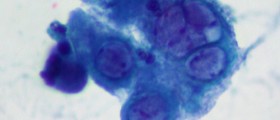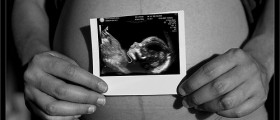
Herpes is a disease caused by both herpes simplex virus type 1 (HSV-1) and type 2 (HSV-2). Oral herpes is the most common form of the infection and it is distinguished by cold sores or fever blisters which infect the face and mouth. Genital herpes, known simply as herpes, is the second most common form of herpes. It is characterized by pain, itching and sores in the patient’s genital area. Other health conditions caused by herpes simplex viruses are herpetic whitlow, herpes gladiatorum, ocular herpes (keratitis), cerebral herpes infection encephalitis, Mollaret's meningitis, neonatal herpes, and possibly Bell's palsy.
Transmission of herpes
Herpes is spread by direct contact including sexual contact, anal sex, oral sex, vaginal sex as well as kissing and skin-to-skin contact with the infected person. The virus dies quickly outside of the body, so it's nearly impossible to get the infection through contact with toilets, towels or other objects used by an infected person. Many people with herpes are sometimes not aware that they are infected. Herpes virus can even be transmitted even if the infected person does not have the presence of sores or other symptoms of infection. There is no known cure for herpes and the virus remains in the body for the rest of the patient’s life. Normally, after a couple of years, people become eternally asymptomatic and no longer experience outbreaks, though they may still be contagious to others.
Stages of herpes
The great majority of people will never find out they are infected with herpes, because they have no obvious signs and symptoms. Sometimes, the symptoms can be very mild so that the infection goes completely unnoticed. For those who experience the symptoms of herpes, first outbreak of infection is usually the worst. For some of the patients, this is also the last outbreak but many of them continue experiencing outbreaks for as long as 40 years after the initial one.
At the earliest onset, genital herpes is characterized by pain or itching, beginning within a few weeks after exposure to the infection. After a couple of days, small red bumps may appear. During the later stage, the bumps rupture, becoming ulcers that ooze or bleed. At the final stage, scabs form and the ulcers heal. In women, affected parts of the body include vaginal area, external genitals, buttocks, anus or cervix. In men, affected parts of the body include the penis, scrotum, buttocks, anus, thighs or inside the urethra.
In the cases of oral herpes, sores begin as blisters that are frequently grouped in clusters. After the blister stage, they break open and form ulcers in the skin or mucous membranes. At the final stage, crusts or scabs form over the ulcers and eventually fall off and the tissue heals.

















Your thoughts on this
Loading...